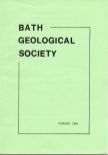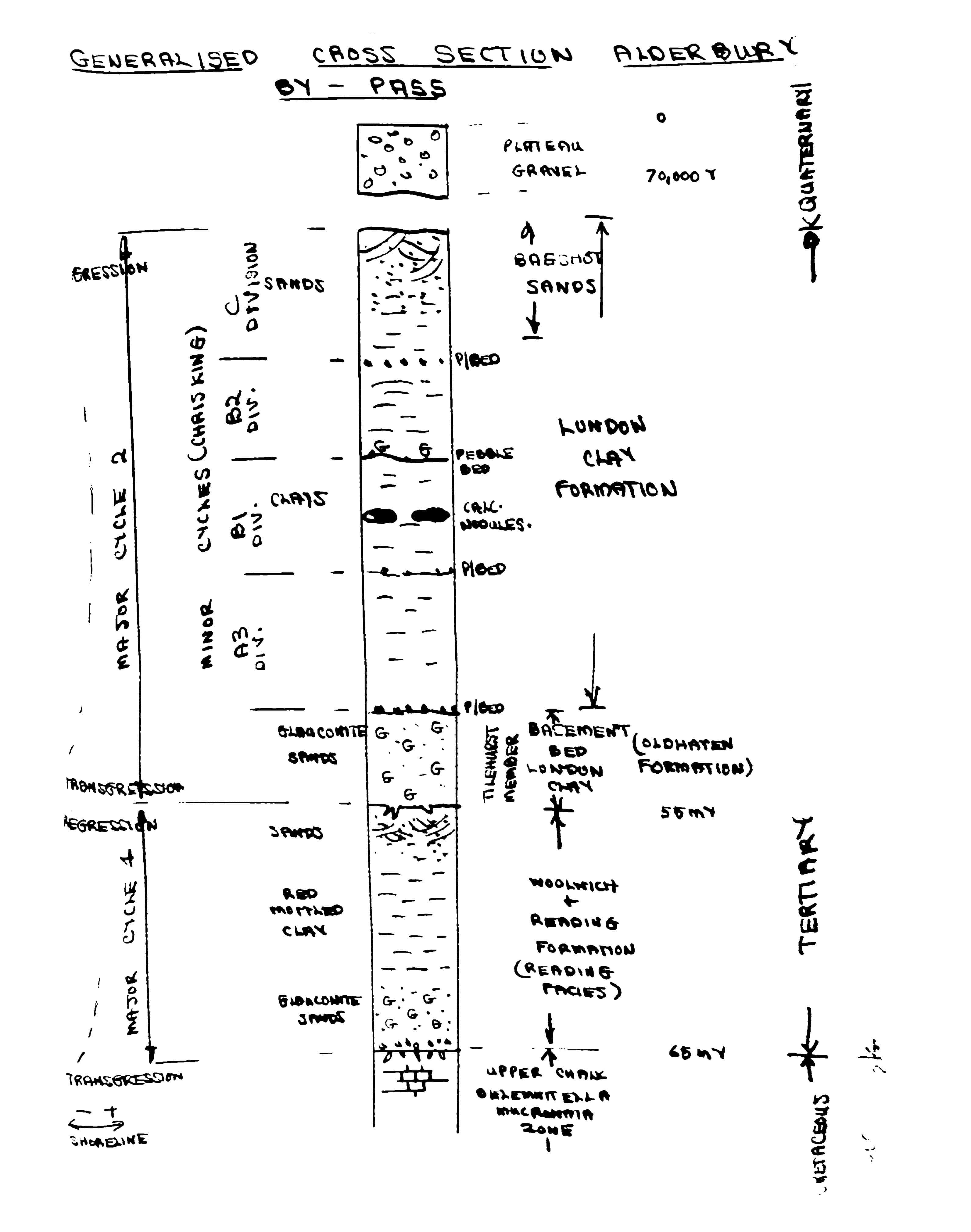A General View of the Geology of the Alderbury By-Pass Clarendon, Wiltshire

In 1978 a new road cutting for the Alderbury By-Pass at Clarendon, six miles S.E. of Salisbury, exposed sediments ranging from the Upper Cretaceous Chalk, through Reading Beds, London Clay and Bagshot Sands of Tertiary age, to Pleistocene gravels.
Clarendon is famous for the diversity, profusion and excellent preservation of its London Clay fossils, and when the L & S.W.R. railway was cut through in 1847, Prestwich and Edwards collected over 1000 species of mollusc, some peculiar to the locality. The section was again exposed in 1945 after a landslip, when G F Elliot collected from here. The site also has importance as the most northerly exposure of London Clay in the Hampshire Basin and is close to the presumed NE-SW coastline of the London Clay Sea in Palaeogene times. Its exact stratigraphic correlation with the rest of the Hampshire Basin has until now remained an enigma.
Structurally, the sediments from an asymmetrical synclinal fold, trending E-W, complementary to the Dean Hill anticline, immediately to the south. The fold preserves an even narrow strip of the Tertiary sediments, within the chalk outcrop. Apparent overset of the Tertiary sediments, on to several zones of the Upper Chalk, indicates that the initial phase of folding of the Upper Chalk may have occurred much earlier than previously thought, that is, between deposition of the Upper Chalk and the basal Tertiary beds (Reading Beds).
Underlying the whole site is the Upper Chalk, a very soft and white, pure limestone, with infrequent bands of black nodular flints. Macrofauna collected from the chalk included Belemniteella mucronata, Echinocorys scutatus, Inoceramus, Cria etc., which together with the microfauna confirmed that this was Upper Campanian Chalk of the Belemnitella mucronata Zone.
Towards the end of the Upper Cretaceous, tectonic movements, almost certainly associated with the opening of the Atlantic Ocean basin, resulted in the early cessation of chalk deposits in England, and a chalk landscape subject to considerable sub-aerial erosion. At Clarendon over 100 metres of chalk was removed.
The chalk landscape was then buried by interdigitated fluvial, estuarine and marine sediments of Palaeogene age. Remnants of these sheet deposits are preserved in the London and Hampshire Basins, which at that time formed a single basin, 700 metres in depth, before being isolated by mid-Tertiary folding and erosion.
Palaeographic reconstruction indicates that for much of the Palaeogene, South East England lay on the western margin of a shallow marine gulf, the Anglo-Paris Cuvette, which opened eastwards to the North Sea Basin. Repeated eustatic waxed out of the gulf, resulted in frequent shifts of coastline waxing and waning changes in balance of subaerial and marine influences, the sediments being laid down in a cyclical sequence. Two main cycles of sedimentation can be recognised at Clarendon, each cycle being marked by a cycle of glauconitic bioturbated sands with rolled flint pebbles shoals of large abraded Ostrea bellovacina at the base, resting on a chalk contact infested with borings. The glauconitic sands pass gradually upwards into red and purple clay, deposited oligotically in lagoons and marshes. Above them are thicker regressive sand sequences, in places with strongly undirectional cross bedding, representing meandering alluvial channel deposits, derived from rivers to the west and north-west.
The second cycle, again commences with bioturbated glauconitic sands (London Clay Basement Bed), resting on the bored and planar surface of the Reading Beds. These grade upwards into a typical London Clay, a grey green stiff silty clay, weathering out to a brown colour with occasional bands of calcareous conglomerate or a few Black flint pebble beds.
The common macrofossils collected from the London Clay at Clarendon were Glycymeris plumsteadiensis, Nemocardium plumsteadianum, Pitar obliquus and Ditrupa from the basement bed, Ostrea pulcherrima, Aporrhais sowberbii, Venericor pseudoplenticea curta from division A and Panopea, Euspira, ostracods and abundant turrids from division B. Scattered throughout the clay are the vertebrates and turritella, Sand Shark fish and single teeth of the Eagle Ray and otoliths of the Sand

